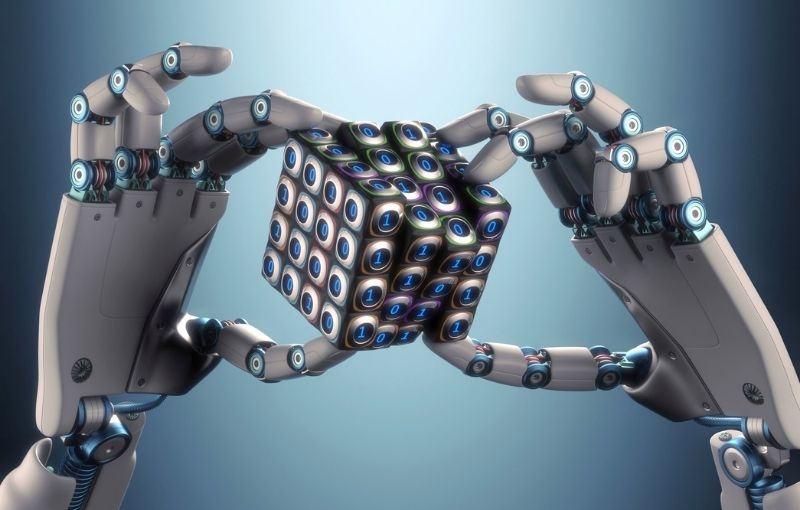New industry research stated that early experiments with artificial intelligence in talent acquisition have led to broader deployments, providing enhanced automation for TA operations.
That’s a fancy way of saying that recruiting teams using AI are seeing the value and beginning to use it even more. They might have started with a chatbot on their careers site or virtual assistant to help schedule interviews. Now, they’re implementing AI-powered sourcing or assessment processes.
And while the increase in use is validating for those developing HR technologies, what does this mean for the folks doing the recruiting? Perhaps more importantly, if demand is growing, what’s next for AI in TA?
Current State
Let’s start with where we are today. The world is in a weird place, stuck somewhere between going back to life as we knew it and adopting a new normal. Though there’s no telling what will happen next, one thing is for sure – the earth keeps spinning.
As such, work soldiers on and companies need to take a fresh look at old problems – and recruiting is a big one. No surprise, Aptitude Research found that only 22% of companies have gone through a digital transformation of their TA tech stack, with efficiency as the number one driver behind TA tech decision-making in 2021.
Between a prolonged period of uncertainty, office limbo and the looming threat of the Great Resignation, the time has come to rethink how we attract, engage and hire.
AI is in the middle of this sea of change, but the early days are drawing to a close. Ninety percent of employers report they are experiencing the benefits they expected from these technologies, particularly around chatbots and automation.
As Lighthouse Research Analyst Ben Eubanks explained in April 2021, “These capabilities are rapidly becoming table stakes for the modern talent function, enabling teams to spend time on critical activities, driving a positive candidate experience and increasing impact and value.” Eubanks went on to detail the top ways employers use their reclaimed time, which include: “sourcing, connecting with key candidates and communicating with prospects in the hiring funnel.”
Recognizing this, we’re able to see the evolution starting to take place.
For too long, AI seemed to be a far-fetched idea akin to science fiction – and yes, it is a branch of computer science dedicated to building machines capable of performing human tasks. The operative word here is performing – not replacing, not supplanting, not even doing – performing. It took the daily, practical application of AI for many to realize they were accustomed to, and even comfortable with, these types of interactions.
Having jumped that hurdle, we’re ready to talk about the future.
Future State
Put frankly, we’re reaching AI’s day of reckoning as organizations grow more comfortable with the technology, seek greater functional depth and begin to apply AI across the hiring process.
However, as we move toward maturity, Deloitte points out, “Recruiters and HR experts require some understanding of AI, what it is and the promise it holds for recruitment, the ethics and legislation focused on the intersection of AI and bias in recruitment and also what is needed to implement AI in your recruitment process.”
For some, these caveats may impede progress, but for those who are ready, willing and able to move ahead, there are other use cases to consider – use cases that support a more data-driven approach to recruiting.
Here are three possibilities:
- Filter outreach: With burnout a considerable risk for recruiters, AI can help reduce applicant overload by sorting, matching and scoring candidates. These solutions sit near the top of the funnel, able to navigate high volumes of applicants by building out their profiles and filtering candidates as they engage. In turn, recruiters stay ahead of the curve and avoid getting bogged down.
- Improved diversity: AI brings understanding and accountability into the recruiting process. It acts as a third party, identifying and visualizing the diversity of talent pipelines. If there are goals in place, this line of sight will keep hiring on track. If not, it will enable an organization to self-audit and get transparent.
- Skills-based recruiting: According to the World Economic Forum, “Skilling people for new roles, even externally, is one of the smartest things a business can do because of the impact organizations have on communities.” Whether hiring for on-site or remote positions, AI can assess candidates and create shortlists based on desired skills, even hidden ones.
There’s one more thing to note as it relates to the future of AI in TA. It all comes down to data health and hygiene. Without this critical factor, we’re looking at profiles without resumes, records without contact information and applications without work experience.
So, if there’s a trend to spot, a balm to solve those common recruiting woes, it’s this: Healthy data equals healthy outcomes.
Authors
Dave Barthel
Dave Barthel joined HiringSolved in 2019, after more than 25 years of working for the Allegis family of companies. There, Barthel was the top producing sales leader—starting as a technical recruiter and quickly growing his role to become the Managing Director of Global Business Development for AGS. At HiringSolved, Barthel serves as the Executive Vice President of Sales and Marketing—overseeing the sales, marketing, and customer success functions to ensure the success of HiringSolved’s users through smart automation.
Recruit Smarter
Weekly news and industry insights delivered straight to your inbox.






